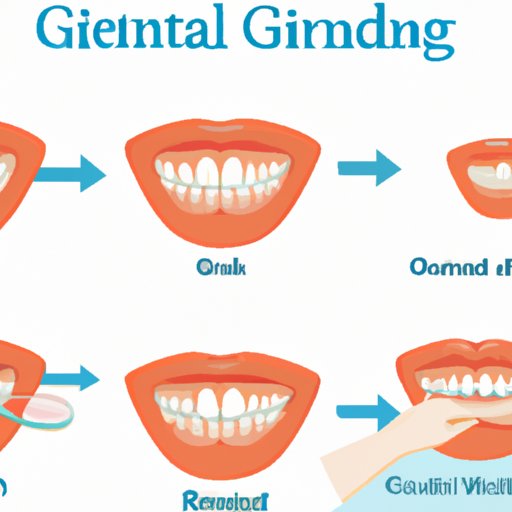How to Treat Gingivitis: A Complete Guide to Healthy Gums
Gingivitis is a common oral health condition that affects nearly 80% of adults at some point in their lives. It occurs when plaque and bacteria accumulate on the teeth and gums, leading to inflammation. Left untreated, gingivitis can progress into more severe forms of periodontal disease, which can lead to tooth loss and other health problems. In this article, we’ll provide a detailed guide on how to treat gingivitis and prevent its recurrence.
Causes and Symptoms of Gingivitis: A Complete Guide for Oral Health
Gingivitis is a mild form of gum disease that occurs when plaque and bacteria accumulate on the teeth and gums, leading to inflammation. Common causes of gingivitis include poor oral hygiene, smoking, stress, hormonal changes, and certain medications. Symptoms of gingivitis include red, swollen, and bleeding gums, bad breath, and receding gum line. Early detection and treatment of gingivitis are vital to prevent the development of more severe forms of gum disease.
Natural Remedies for Gingivitis: Alternatives to Conventional Treatments
While conventional treatments for gingivitis include professional dental cleanings, antibiotics, and other medications, natural remedies can provide effective alternatives for treating and preventing gingivitis. Natural remedies for gingivitis include oil pulling, saltwater rinses, hydrogen peroxide mouthwash, and herbal remedies such as aloe vera and tea tree oil. Incorporating healthy lifestyle choices such as a balanced diet and regular exercise can also promote good oral health and reduce the risk of gingivitis.
Professional Treatments for Gingivitis: A Visit to the Dentist
A visit to the dentist is an essential part of preventing and treating gingivitis. Professional dental treatments for gingivitis typically include scaling and root planing, which involves removing plaque and tartar from the teeth and smoothing the root surfaces. Other treatments may include antibiotics and other medications, depending on the severity of the condition. Tips for finding the right dentist for gingivitis treatment include choosing a dentist who specializes in gum disease, checking patient reviews, and seeking referrals from family and friends. Regular check-ups with a dentist can also help prevent gingivitis and identify any potential problems early on.

Prevention of Gingivitis: How to Keep Your Gums Healthy and Clean
Prevention is key to maintaining good oral health and preventing gingivitis. Tips for keeping your gums healthy and clean include brushing your teeth twice a day with fluoride toothpaste, flossing daily, using mouthwash, and eating a balanced diet rich in fruits, vegetables, and whole grains. Avoiding cigarettes and other tobacco products and limiting alcohol consumption can also reduce the risk of gingivitis. Regular dental check-ups and cleanings are essential to keeping your gums healthy and detecting any potential problems early on.
Food Choices that Make a Difference in Gingivitis Treatment
Eating a balanced diet that is rich in nutrients can help promote good oral health and prevent gingivitis. Foods that are high in vitamin C, such as citrus fruits, strawberries, and kiwi, can help strengthen the gums and reduce inflammation. Other foods that are beneficial for oral health include leafy greens, dairy products, and lean proteins. Avoiding sugar and other processed foods can also reduce the risk of gingivitis and other oral health problems.
Dos and Don’ts of Gingivitis Treatment: A Comprehensive Guide
Proper brushing and flossing techniques are essential for preventing and treating gingivitis. Tips for proper brushing and flossing techniques include using a soft-bristled toothbrush, brushing at a 45-degree angle, and flossing at least once a day. Mouthwash can also help prevent gingivitis by killing bacteria and freshening breath. Proper dental care habits include replacing your toothbrush every three to four months, avoiding using toothpicks or other sharp objects on your gums, and using a water flosser as an alternative to traditional floss. Habits to avoid include smoking and chewing tobacco, grinding your teeth, and eating sugary or acidic foods.
Conclusion
Gingivitis is a common oral health condition that can be prevented and treated with proper care and attention. Regular brushing and flossing, a healthy diet, and regular dental check-ups and cleanings can help keep your gums healthy and prevent gingivitis. If you suspect you may have gingivitis, it’s important to seek treatment and prevent its progression into more severe periodontal disease. With the right care and attention, you can maintain healthy gums and a beautiful smile for years to come.
